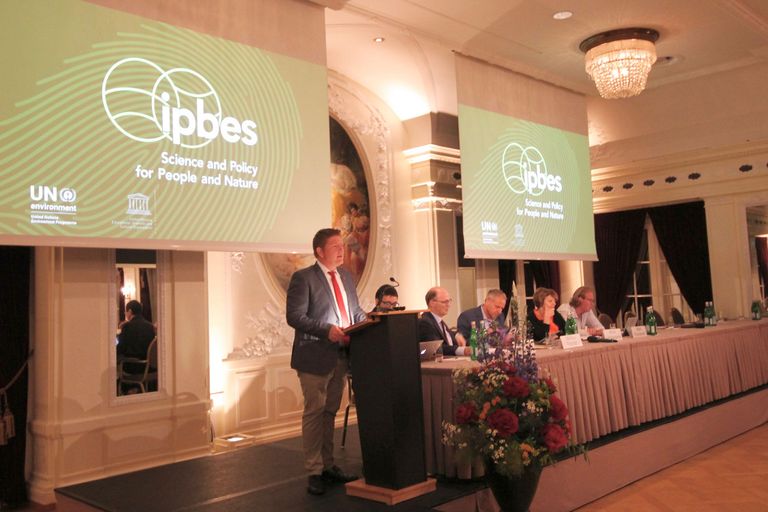The Regional Assessment Report on Biodiversity and Ecosystem Services for Europe and Central Asia produced by the Intergovernmental Science-Policy Platform on Biodiversity and Ecosystem Services (IPBES) provides a critical analysis of the state of knowledge regarding the importance, status and trends of biodiversity and nature’s contributions to people. The assessment analyses the direct and underlying causes for the observed changes in biodiversity and in nature’s contributions to people and the impact that these changes have on the quality of life of people.
Land-use change as a major driver
The major driver of the loss of biodiversity and ecosystem services to date has been land-use change, caused in part by production-based subsidies that led to unsustainable intensification of agricultural practices. However, the impact of human-induced climate change is increasing and is likely to be one of the most important drivers in the future. The assessment also found that economic growth has, in general, not been decoupled from environmental degradation.
A mix of governance options, policies and management practices is available for public and private actors in Europe and Central Asia, but further commitment is needed to adopt and effectively implement them to address the drivers of change, to safeguard biodiversity and to ensure nature’s contributions to people for a good quality of life.
Promising governance options
1. Mainstreaming the conservation and sustainable use of biodiversity and the sustained provision of nature’s contributions to people into policies, plans, programmes, strategies and practices of public and private actors should be achieved with more proactive, focused and goal-oriented environmental action, including quantitative goals.
2. Developing integrated approaches across sectors would enable more systematic consideration of biodiversity and nature’s contributions to people by public and private decision makers. This includes further options to measure national welfare beyond current economic indicators, taking account of the diverse values of nature. Ecological fiscal reforms would provide an integrated set of incentives to support the shift to sustainable development.
3. Effective governance of biodiversity and nature’s contributions to people would benefit from well- designed mixes of policy instruments, suited to the context. Legal and regulatory instruments are the backbone of policy mixes. The removal of harmful subsidies in various sectoral policies, such as agriculture, fisheries and energy would reduce negative impacts on biodiversity and allows for a more cost-effective use of public funds.
4. Economic, financial, social and information-based instruments provide additional incentives for governments, businesses, non-governmental organizations and citizens. Further efforts would help to develop better rights-based approaches. A key factor constraining the effectiveness of existing policy mixes is limited enforcement owing, for example, to a lack of human resources, institutional capacity and financial means, or corruption.
5. A wide range of actors and stakeholders is increasingly integrated into governance processes. This can have a positive effect on biodiversity and nature’s contributions to people if the effectiveness, efficiency and equity implications of such integration are carefully monitored, evaluated and improved. Lack of adequate financing is a major constraint on efforts to achieve biodiversity conservation and ecosystem restoration.
6. Dealing with change is a matter of societal choice. The way in which we choose to organize our societies and institutions, in both public and private spheres, is key to the realization of pathways towards the sustainable future envisioned by a diverse range of actors in Europe and Central Asia.



